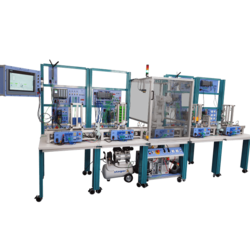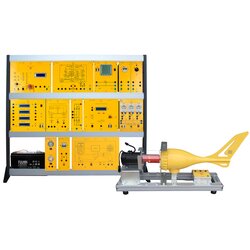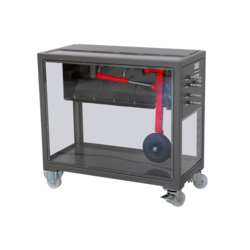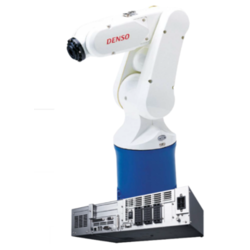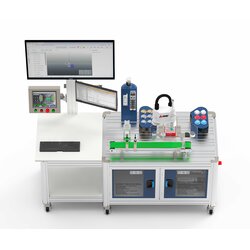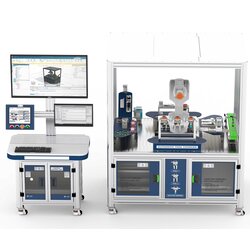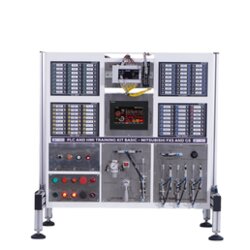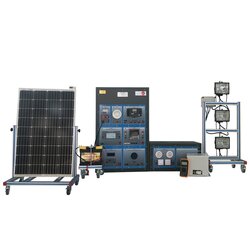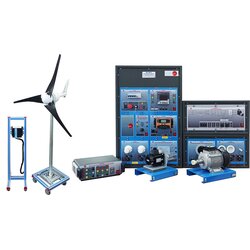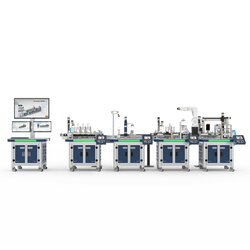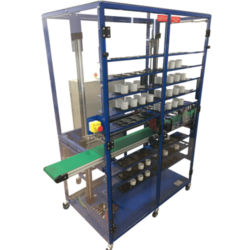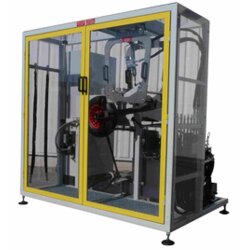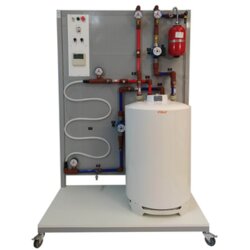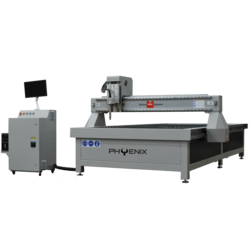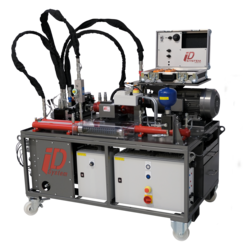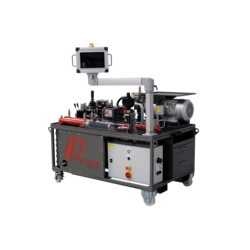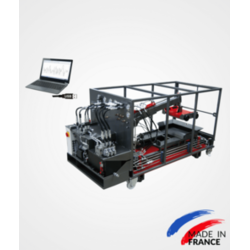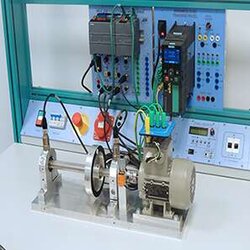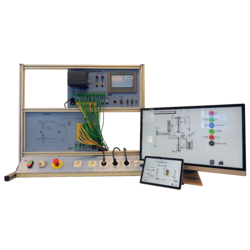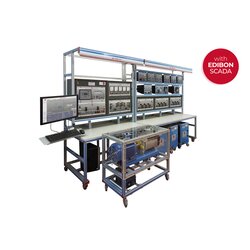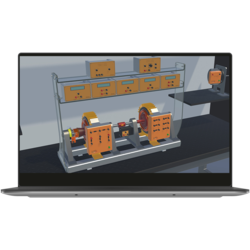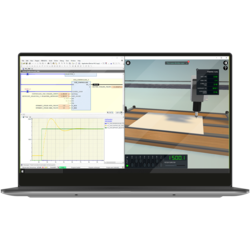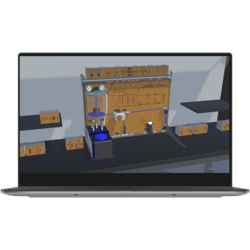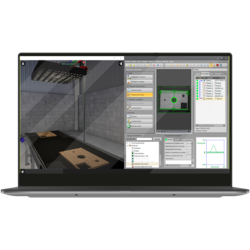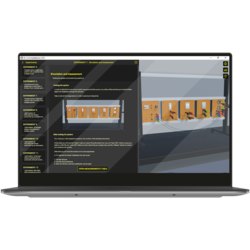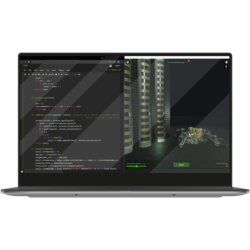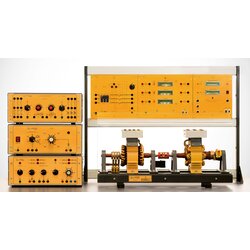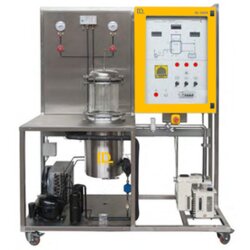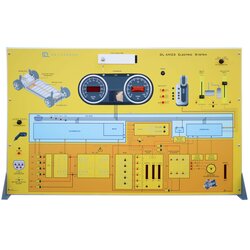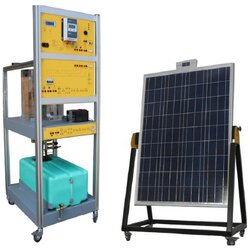Vocational Training Equipment
Sort by
Learn about Vocational Training Equipment
Lets jump into some key information about Vocational Training Equipment, which will help us understand how to approach the procurement of new instructional technology.
What is Vocational Training Equipment?
Vocational training equipment refers to the tools, machinery, instruments, and devices used in vocational training programs to provide practical, hands-on experience in specific trades or occupations. Vocational training, also known as technical or career education, focuses on preparing individuals for specific jobs or careers rather than a purely academic or theoretical education.
What type of Vocational Training Equipment exists?
taught. Here are some examples of vocational training equipment:
- Automotive Tools: Equipment used in automotive vocational training includes tools for engine repair, diagnostics, brake systems, and general vehicle maintenance.
- Culinary and Hospitality Equipment: Cooking utensils, commercial kitchen appliances, and hospitality-related equipment used in culinary arts and hospitality management programs.
- Welding Machines: Welding equipment such as welding machines, cutting tools, and safety gear for training in welding and metal fabrication.
- Construction Tools: Carpentry tools, power tools, safety equipment, and construction machinery for vocational training in carpentry, masonry, or general construction.
- Healthcare Simulators: Medical training equipment, including patient simulators, medical imaging devices, and diagnostic tools for healthcare-related vocational programs.
- Electrical Training Kits: Kits with electrical components, circuits, and instruments used for hands-on training in electrical systems and electronics.
- Computer Labs: Computers, software, and networking equipment used in vocational training for information technology, computer programming, and networking.
- Beauty and Cosmetology Tools: Hairdressing tools, skincare equipment, and salon apparatus for vocational training in beauty and cosmetology.
- Plumbing Equipment: Tools and materials for plumbing training, including pipe fittings, wrenches, and plumbing fixtures.
- Agricultural Machinery: Tractors, plows, and other agricultural machinery used in vocational training programs related to farming and agricultural practices.
- Textile and Sewing Machines: Sewing machines, looms, and other textile machinery for vocational training in fashion design and textile manufacturing.
- HVAC (Heating, Ventilation, and Air Conditioning) Systems: Equipment for training in HVAC systems, including air conditioning units, ventilation components, and refrigeration tools.
The goal of vocational training equipment is to provide students with practical skills and hands-on experience relevant to their chosen career paths. These tools and machines are crucial for bridging the gap between theoretical knowledge and real-world application, preparing individuals for success in their respective vocational fields.
Which types of educational institutions use Vocational Training Equipment?
Vocational training equipment is used in a variety of educational institutions that offer vocational or technical training programs. These institutions focus on preparing students for specific trades or occupations, providing practical skills and hands-on experience. Here are the types of educational institutions that commonly use vocational training equipment:
- Vocational Schools: Specialized institutions that offer vocational and technical education programs, focusing on practical skills and job-specific training.
- Technical Institutes: Educational institutions that emphasize technical and hands-on training, often offering programs in engineering technology, electronics, and other applied sciences.
- Community Colleges: Many community colleges provide vocational training programs that lead to certificates or associate degrees in fields such as healthcare, automotive technology, and information technology.
- Career and Technical Education (CTE) High Schools: High schools with a focus on career and technical education, offering vocational training programs alongside traditional academic coursework.
- Apprenticeship Programs: Organizations and institutions that run apprenticeship programs, where individuals learn a trade through a combination of classroom instruction and on-the-job training.
- Adult Education Centers: Centers that offer vocational training and retraining programs for adults looking to acquire new skills or transition to new careers.
- Trade Schools: Private institutions that specialize in providing training for specific trades, such as cosmetology, welding, or HVAC.
- Correctional Institutions: Some correctional facilities provide vocational training programs to inmates, offering them skills that can be useful upon reintegration into society.
- Military Training Centers: Military training centers often include vocational training programs for various technical roles within the armed forces.
- Online Education Platforms: Some online platforms offer virtual vocational training programs, providing interactive simulations and virtual labs for skill development.
The use of vocational training equipment is not limited to a specific type of educational institution but rather spans a range of settings where practical, job-specific skills are a primary focus. The equipment used in these institutions is tailored to the specific needs of the vocational programs offered, covering a diverse array of fields and industries.
How to choose the best Vocational Training Equipment?
Choosing the best vocational training equipment involves careful consideration of various factors to ensure that the equipment aligns with the specific needs of the training program and facilitates effective skill development. Here are some key considerations to help in the selection process:
- Identify Training Program Needs: Clearly define the objectives and requirements of the vocational training program. Understand the skills and competencies that participants need to develop.
- Relevance to Industry Standards: Ensure that the equipment aligns with industry standards and practices. This ensures that participants are trained on tools and technologies commonly used in the field.
- Quality and Durability: Invest in high-quality equipment that can withstand regular use in a training environment. Durable equipment is more likely to provide a reliable and long-lasting training experience.
- Safety Features: Prioritize equipment with safety features to ensure the well-being of participants. Safety should be a paramount consideration, especially when dealing with tools and machinery.
- Ease of Use: Choose equipment that is user-friendly and easy to operate. This is particularly important in vocational training settings where participants may have varying levels of experience.
- Scalability: Consider the scalability of the equipment. Choose tools and machines that can accommodate different levels of complexity, allowing for progressive skill development.
- Maintenance and Support: Evaluate the maintenance requirements of the equipment. Choose equipment for which spare parts are readily available, and ensure that there is good customer support in case issues arise.
- Integration with Technology: Consider whether the equipment can integrate with technology, such as computer software or simulation tools, to enhance the training experience.
- Budget Considerations: Establish a budget for vocational training equipment and seek options that offer the best value for the investment. Consider both the upfront costs and long-term costs, including maintenance and potential upgrades.
- Reviews and Recommendations: Research and read reviews from other vocational training programs or institutions that have used the equipment. Recommendations and feedback from peers can provide valuable insights.
- Customization Options: Choose equipment that allows for customization to meet the specific needs of the training program. This could involve adjusting settings, adding attachments, or incorporating industry-specific components.
- Environmental Impact: Consider the environmental impact of the equipment, including energy efficiency and sustainable manufacturing practices, to align with institutional values and environmental responsibilities.
By considering these factors, vocational training programs can make informed decisions when selecting equipment that enhances the learning experience and effectively prepares participants for success in their chosen careers.


